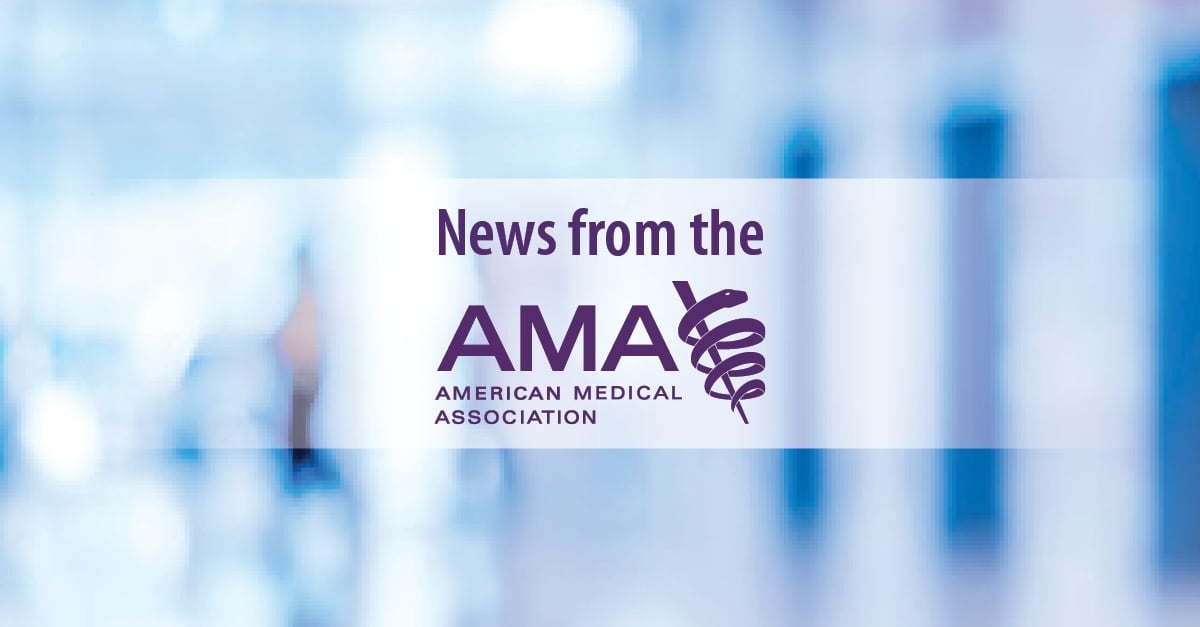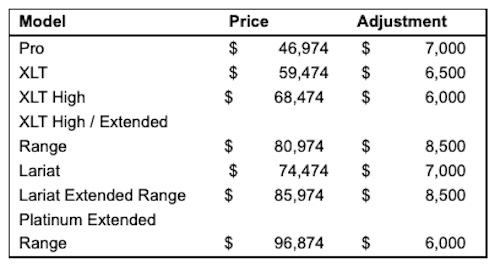AMA Update covers a range of health care topics affecting the lives of physicians, residents, medical students and patients. From private practice and health system leaders to scientists and public health officials, hear from the experts in medicine on COVID-19, medical education, advocacy issues, burnout, vaccines and more.
Featured topic and speakers
Featured topic and speakers
In today’s AMA Update, AMA Vice President of Science, Medicine and Public Health Andrea Garcia, JD, MPH, covers the latest on coronavirus variant XBB.1.16 and FDA’s authorization changes for Moderna and Pfizer’s bivalent vaccines.
Also discussing the rise of strep cases, increases in sexually transmitted diseases and infections. Plus what physicians and patients need to know about abortion pill rulings including the Biden administration’s emergency appeal along with Justice Samuel Alito issuing an administrative stay regarding mifepristone. AMA Chief Experience Officer Todd Unger hosts.
Physicians can consult the American Academy of Pediatrics (AAP) guidance for alternative therapies during the shortage.
Learn more at the AMA COVID-19 resource center.
Speaker
Andrea Garcia, JD, MPH, vice president, science, medicine & public health, American Medical Association
Unger: Hello and welcome to the AMA Update video and podcast series. Today we have our weekly look at the headlines, including mifepristone, vaccine updates and the rising rates of STIs. I’m joined, as always, with AMA’s Vice President of Science, Medicine and Public Health, Andrea Garcia, in Chicago. I’m Todd Unger, AMA’s chief experience officer. Also in Chicago. Welcome back, Andrea.
Garcia: Thanks, Todd. It’s good to be here.
Unger: Last week, we talked about mifepristone. There’s been a lot of news since. A lot of back and forth on this one. Where do we stand right now?
Garcia: Yeah. So we’ll start with a little background just to level-set. Mifepristone is approved by the FDA. It’s a safe and effective drug to end pregnancy in the first 10 weeks of gestation, and it’s also commonly used to help manage miscarriages. Two weeks ago, we saw a district court judge in Texas issue a ruling that invalidated the FDA’s approval of mifepristone and that would, of course, block nationwide access to the drug.
We saw the Biden administration appeal that Texas judge’s decision. They requested an emergency stay of that injunction. And then last week, we saw the Fifth Circuit Court of Appeals issue a ruling allowing the FDA’s approval to stand, but they put certain limitations on how that drug can be dispensed.
Unger: What kind of limitations were those?
Garcia: So the appeals court allows use of mifepristone for up to seven weeks of pregnancy. We just mentioned that it’s currently approved for up to 10 weeks, so that’s a shorter window of when that medication can be used. And the appeals court also imposed restrictions ruling that it can no longer be sent in the mail, at least for now.
Unger: So, of course, that was not the end of the story. Other parties have weighed in and a new outcome, at least for now.
Garcia: Yeah. So in an emergency appeal, the Biden administration asked the Supreme Court to stop the lower courts from restricting access to mifepristone. We heard on Friday, Justice Samuel Alito issue an administrative stay, so that temporarily freezes those lower court rulings. It preserves the status quo for the next five days and it gives the Supreme Court justices time to consider that emergency appeal.
So for now, the drug is still available. We’ll, of course, be watching the news really closely for any developments from the Supreme Court. I think we need to definitely recognize here the broader implications of substituting the FDA’s scientific expertise with the court’s interpretation because this has certainly potential, beyond this one drug, to append that drug approval process, which we know was established by Congress. It could overturn FDA’s authority to determine the safety and effectiveness of medications, and, obviously, that would cause profound harm to patients and lead to widespread uncertainty.
Unger: Yeah this is not confusing at all. As you said, you can imagine what might happen with thousands of other drugs. So we’ll definitely stay on this story and keep you updated there. Andrea, another new headline this week and something we have been expecting, a vaccine update from the FDA. We’ll be talking with the AMA’s ACIP liaison, Dr. Sandra Fryhofer, next week to get all the details.
But in the meantime, can you give us some of the high-level takeaways right now?
Garcia: Yeah. So we saw the FDA amend that EUAs for both the Moderna and the Pfizer bivalent vaccines. That includes authorizing the bivalent vaccines to be used for all doses administered to individuals six months of age and older. That includes for an additional dose or doses in certain populations.
I think it’s worth noting that those monovalent vaccines are no longer authorized in the U.S. We know that the issue of waning immunity has come up, especially for seniors and immunocompromised people. So under this FDA authorization, those 65 and older who have received one of the single doses of the bivalent booster can now get an additional dose at least four months after their first and most immunocompromised individuals can receive an additional dose two months after their last dose. And then the FDA went on to say that additional doses can be provided at the discretion of their physician.
Unger: That is really great news. Are there any other groups affected?
Garcia: Yeah. So most individuals who were previously vaccinated with a monovalent booster qualify for a bivalent dose. That includes children. But that dosage really depends on what they received previously. If you’ve received a bivalent dose already and you’re not older or immunocompromised, you’re not currently eligible for another dose. We should hear more about FDA’s plans for future vaccinations after the agency learns more about that fall strain and talks about that in June.
Unger: So if you haven’t gotten vaccinated or are due for a booster, obviously it remains really important because we are seeing new variants emerge. Andrea, we talked last week about two new subvariants. What are the developments there?
Garcia: So variant XBB.1.16, which has been called in the news “Arcturus,” has mostly been fueling an outbreak in India and in some other parts of the world. We are seeing some places in India reintroduce mask mandates. According to the WHO, XBB.1.16 is similar to XBB.1.15, but that variant has an additional mutation in the spike protein. In lab studies, it showed increased infectivity, as well as the potential for increased pathogenicity.
At this point, there is no indication that this variant leads to more severe disease. We do know that XBB.1.16 is here in the U.S. We know CDC is tracking it. We know it accounts for about 7% of new COVID cases. XBB.1.5 is still the dominant variant. It accounts for about 78% of the cases here in the U.S. But XBB.1.16 is now the second most dominant variant in just a few short weeks, so some are predicting that it could eventually become the dominant strain here in the U.S.
Unger: Thank you for that update. Andrea, we have been talking over the past few weeks, too, about a different virus. That’s the Marburg virus. What do we need to there?
Garcia: Well, the latest WHO update was published on April 15, and it suggested that Equatorial Guinea is really struggling to monitor and quarantine cases of Marburg virus and to trace how that infection may be spreading. That’s concerning because we know that being able to quickly identify and isolate those cases is really critical to halting outbreaks both of Marburg and Ebola virus.
The WHO assessment really said that the country’s surveillance system remains suboptimal, with few alerts reported and investigated. I think the better news is that the outbreak in Tanzania appears to be under control, according to experts there, so we’ll of course, continue to keep an eye on both of those outbreaks.
Unger: Well, the news that’s hitting a little bit closer to home, there appears to be an uptick in sexually transmitted diseases in the U.S. Andrea, what’s driving this and how serious is it?
Garcia: The CDC published new data last week and we saw more than 2.5 million cases of sexually transmitted infections or STIs, reported in 2021. That’s a 7% increase over 2020. Chlamydia accounted for more than half of those reported cases. We saw rates of chlamydia increase about 4% in 2021 and cases of gonorrhea rose nearly 5%.
Cases of syphilis increased 32% in one year and that includes a rise in infections passed from pregnant mothers to babies. In 2021, we know congenital syphilis cases caused 220 stillbirths and infant deaths. We also know that those deaths are preventable, so it’s definitely tough to hear those numbers.
While STIs can affect anyone we know, that CDC data is showing that there are a disproportionate number of cases affecting gay and bisexual men, younger people and Black and Native Americans. In a CDC article, Dr. Leandro Mena, who is the director of the CDC’s Division of STD Prevention, said that the U.S. STI epidemic shows no signs of slowing.
Unger: Well that is really concerning. Andrea, why are STIs increasing now, and what can we do about it?
Garcia: Well, it really represents a combination of factors contributing to this overall rise in STI cases. And we’ve talked before about how the pandemic has exacerbated other health care conditions. This is another one of them. And according to that same CDC article, it’s the lack of access to health care, including testing and treatment for STIs. It’s decreased funding for public health, which is also a major driver.
And the other thing to keep in mind is stigma plays a role here and impacting whether or not people seek access to care for STIs. Dr. Mena went on to say that to make progress towards ending the STI epidemic, we really need to meet people where they are. We need to develop tailored and localized interventions to have the greatest impact, and we want to make sure that we’re addressing the social and economic conditions that make it more difficult for some of these populations to stay healthy.
Unger: Well, the other barometer I have are all the folks I know that have kids and one of the things that is popping up on that radar screen is the rise of strep. So, Andrea, this has some experts worried. What’s the concern around this?
Garcia: Yeah. So CDC, during the pandemic, noted that severe infections caused by group A streptococcus decreased by 25% in the U.S., which is great, but those group-based strep infection levels have rebounded. They’re now higher than pre-pandemic levels in some parts of the country.
And I think the complicating factor here is the form of strep called invasive group A strep infections and they’ve remained high in children after we’ve seen sort of those decrease in respiratory viruses like flu and RSV. Some areas of the country have also seen an increase in invasive group A strep infection in adults. That’s particularly true for those age 65 and older.
We know that some types of strep can be mild, but these are very severe infections where the bacteria, that group A strep, gets into the parts of the body where that bacteria is not usually found. So think of the blood or the muscles or the lungs. This requires hospital care and in some cases can lead to death.
Unger: And in terms of treatment, one of the big obstacles here is there continue to be reports of antibiotic shortages, including those that have been used to treat strep infections. Andrea, what do we need to know about these shortages?
Garcia: So the FDA has indicated that there is a national shortage of amoxicillin. We know that’s often prescribed to children to treat group A strep infections. That shortage is a supply issue from the manufacturer, and so we’re expecting that shortage to continue for several months.
There are other forms of amoxicillin, like tablets and capsules, that are not affected, and the American Academy of Pediatrics has put out a good guide for alternative therapies during the shortage. So we’ll put in the description of the episode a link to that guidance. And as with any medication shortage, if patients find that they’re unable to fill a particular prescription, they should always talk to their physician about other potential options.
Unger: And that’s good advice. Andrea, thanks so much for being here today. That wraps up today’s episode. We’ll be back soon with another AMA Update. You can find all our videos and podcasts at ama-assn.org/podcasts. Thanks for joining us. Please take care.
Disclaimer: The viewpoints expressed in this video are those of the participants and/or do not necessarily reflect the views and policies of the AMA.
Discovered on: 2023-04-19 16:30:25
Source: COVID-19, strep, STDs and Marburg cases on the rise with Andrea Garcia, JD,…



